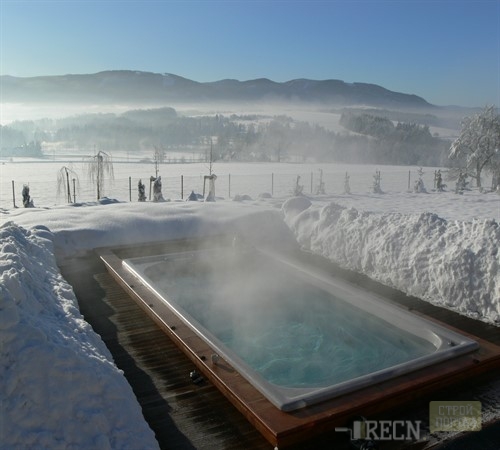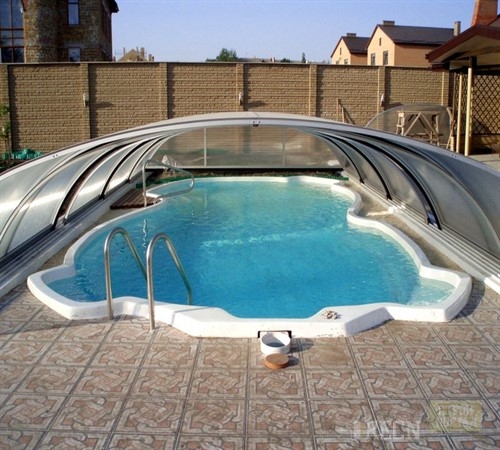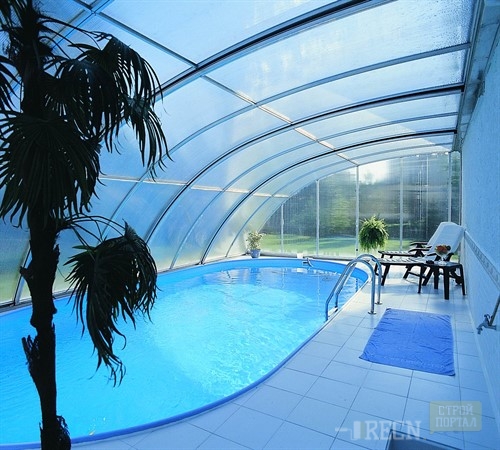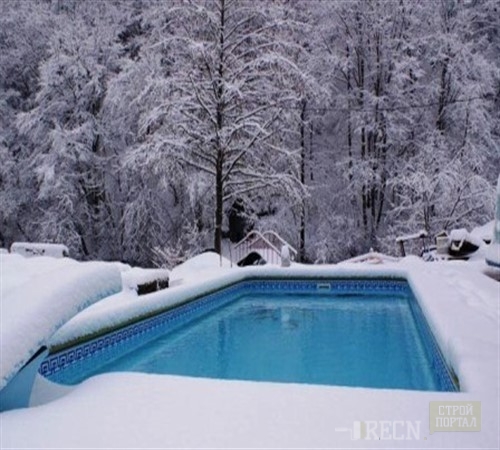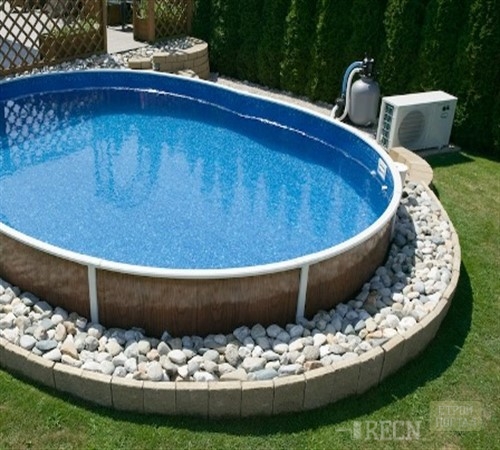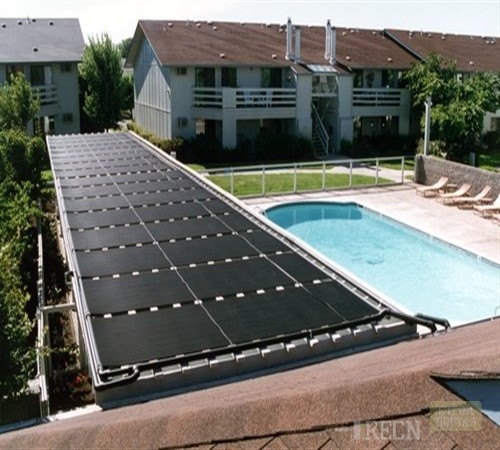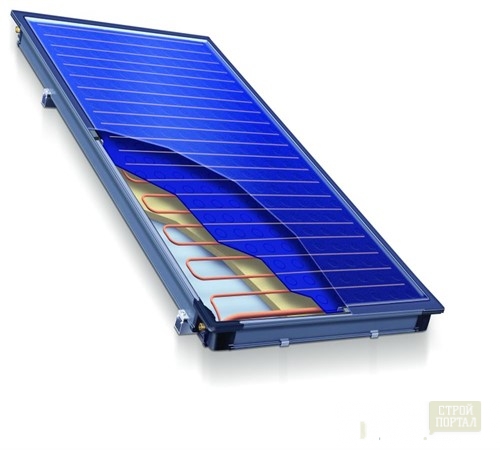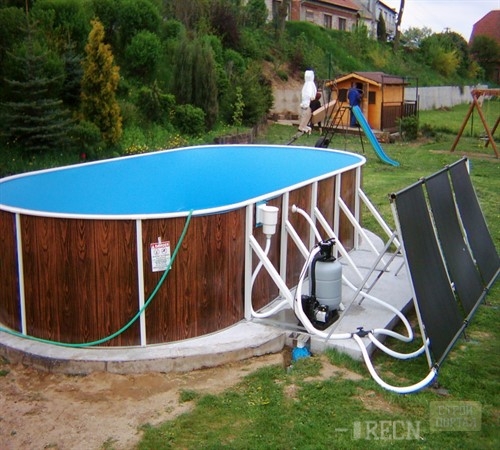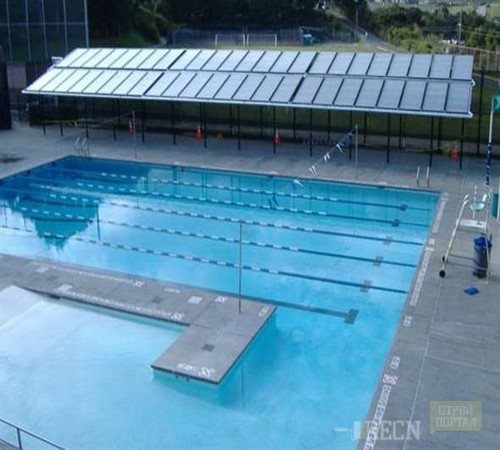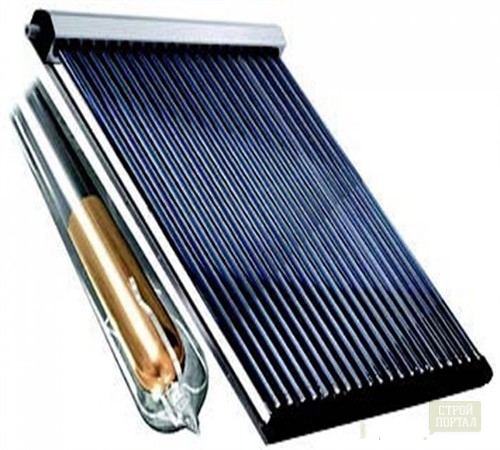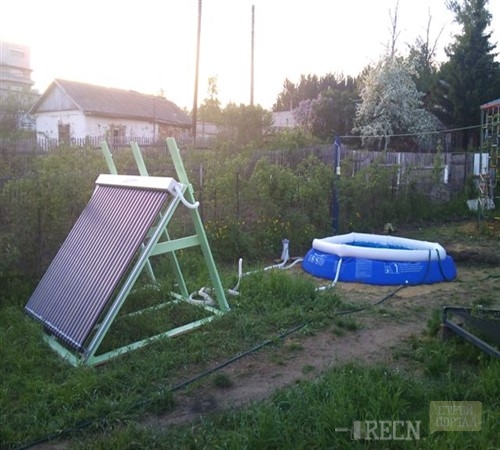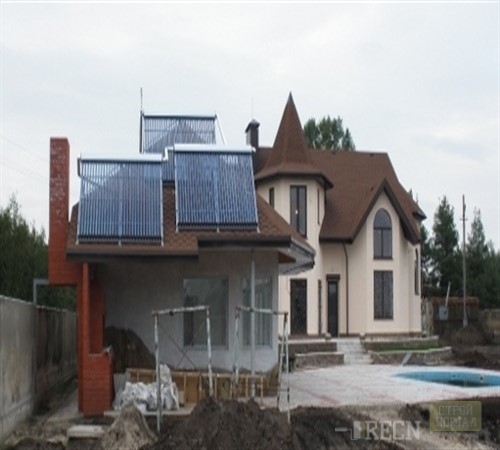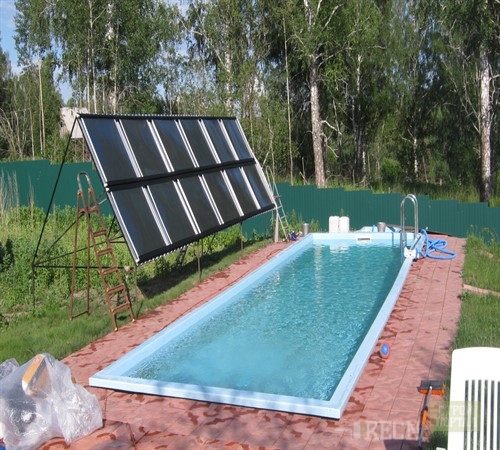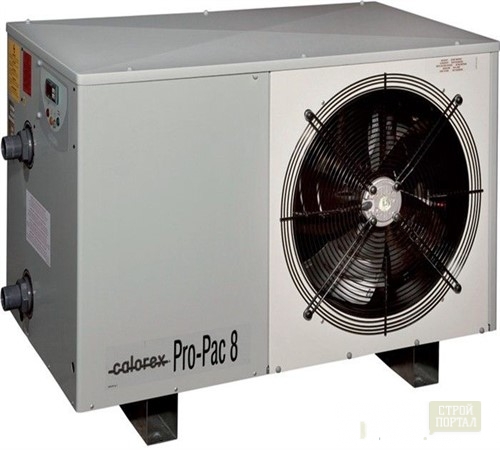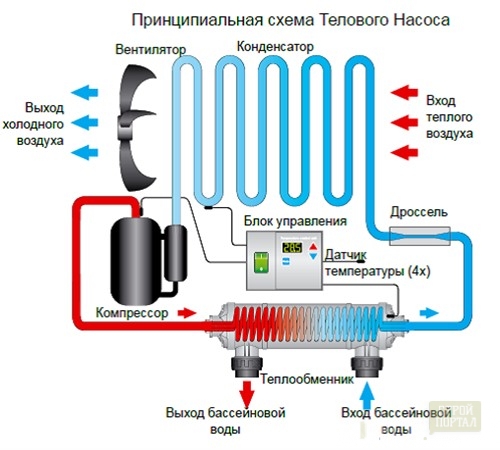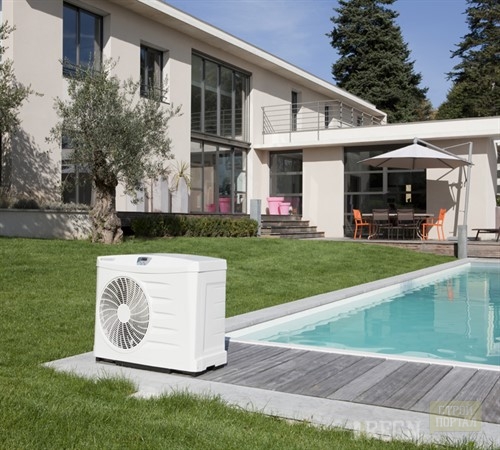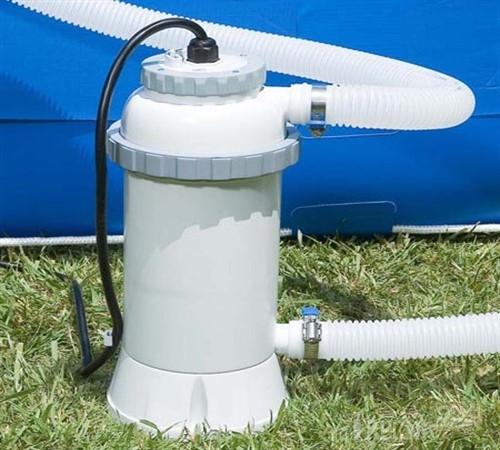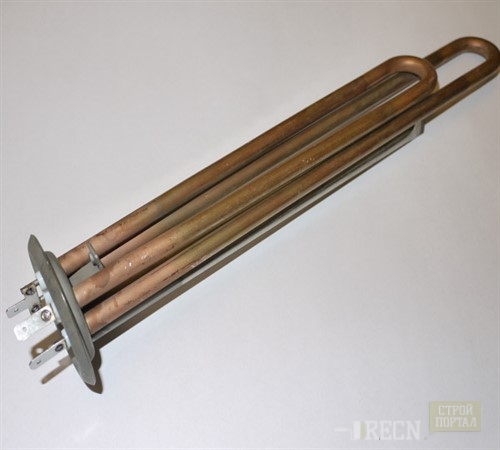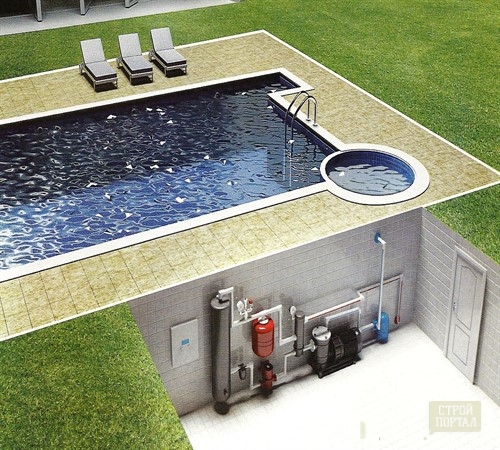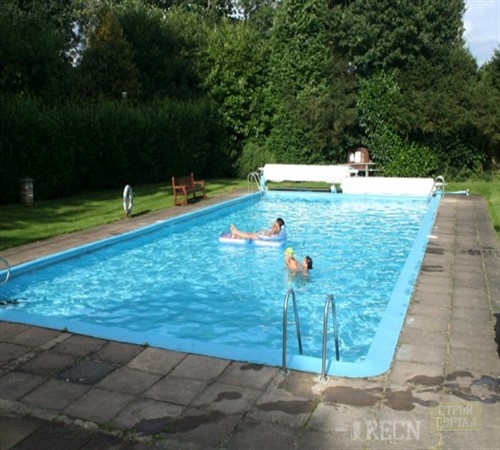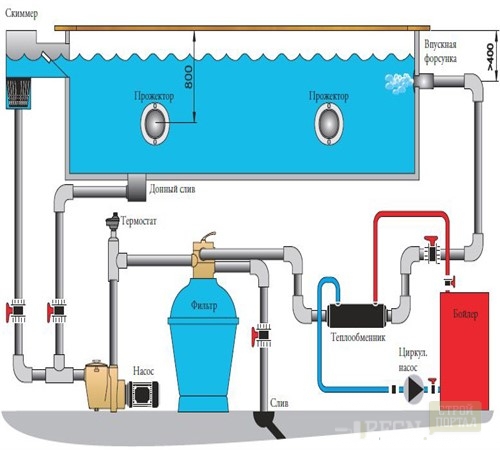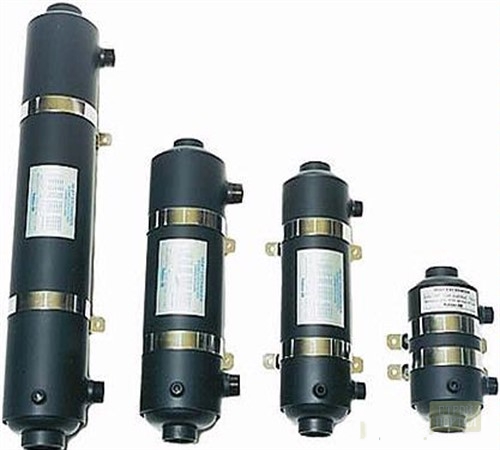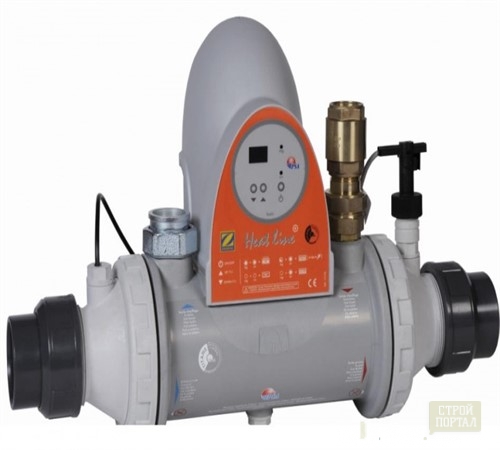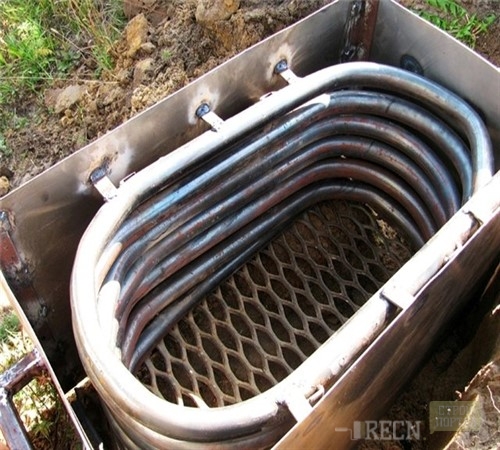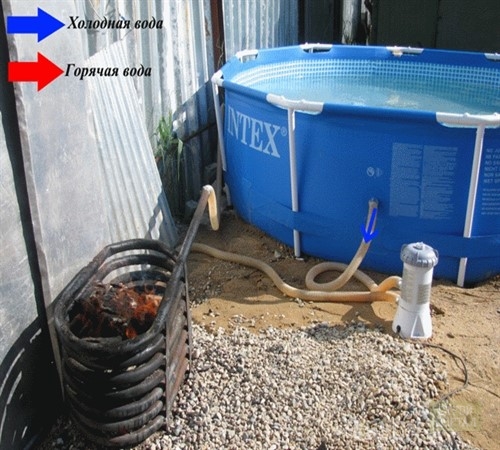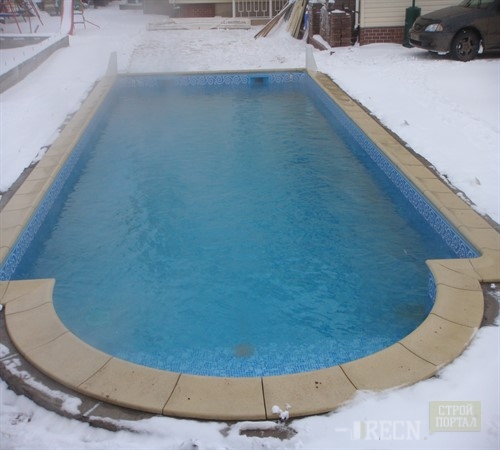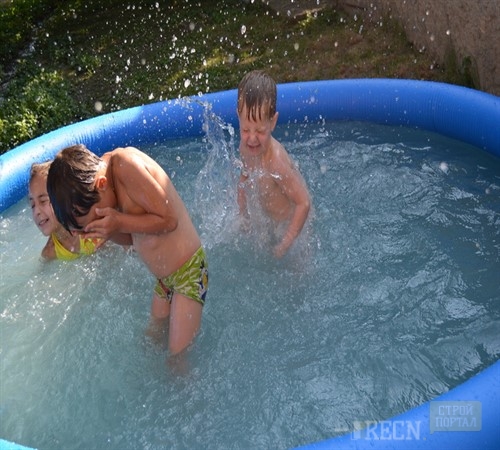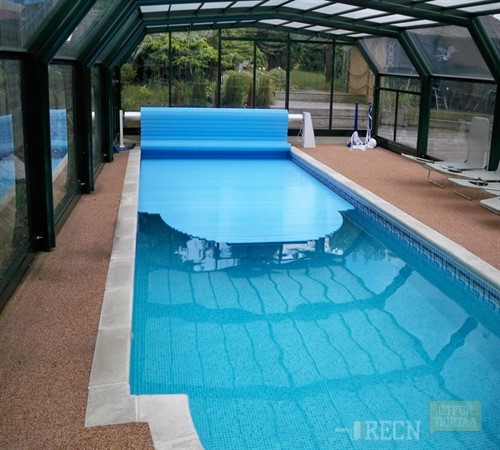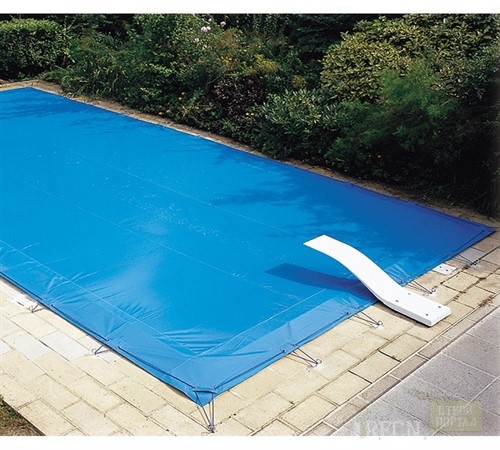
How to make water heating pool Baths, saunas and pools

Water in the pool, located inside the house or on the territory of the subsidence often requires forced heating. Of course, to consider the heating system of the basin is preferably still at the planning stage or during construction, although modern equipment can be installed on the finished design.
Content
The role of water heating
Often, the long-awaited sunny days of summer months turn into a series of cloudy weeks that prevent the full warming of water in the pool under the action of sunlight. At the same time, the pool located in the room is generally not exposed to ultraviolet rays. Of course, if the ceiling of one-story building, in which the pool is placed, made of a material with excellent light light, then the rays reach water. However, heating such a basin, along with the street tank, will depend on the weather whims.
Based on these considerations, to reduce the dependence of water temperature in the pool from weather phenomena, it is necessary to install equipment for water heating, allowing:
- enjoy bathing in the pool, the water temperature of which is corrected taking into account personal preferences and ages of bathing;
- use the pool at any time of the day;
- extend the swimming season in the street pool by 1.5-2 months, if the air temperature is allowed.
Thus, water heating in the pool allows you to create the most comfortable for bathing conditions.
Criteria for selecting water heating
When choosing a device for heating water in the tank, it is necessary to pay attention to the following factors:
- Pool type. If you compare 2 basins of the same volume, then for the open-type pool, the equipment is required for greater power than closed, since the process of cooling the water in the fresh air occurs much faster.
- Pool volume. For a small volume reservoir, it is quite sufficient to adapt a small power with an average heating rate, and for volumetric - exactly the opposite.
- Warming speed. More powerful devices are characterized by a high heating rate, but their cost is also an order of magnitude higher than any low-power devices.
- Operational period. When using the pool in the winter season, equipment with a high degree of heat transfer will be suitable. At the same time, in the summer, especially hot and arid weather, the device of medium power is quite suitable.
Thus, the expediency of acquiring a particular heating device of the device depends on the specific type of basin and the technical characteristics of the equipment itself.
Types of water heating equipment, their characteristics
The manifold of modern equipment is so large that in some situations it complicates the choice of the necessary device. However, several types of devices can be distinguished from a huge range, today they have found the greatest use.
Solar collectors
The relative simplicity of helix allows you to quickly warm up any volume of water due to an increase in or reducing the number of modules taking thermal energy. At the same time, solar collectors are divided into:
1. Flat - performed in the form of airproof panels and contribute to the warming of water during the absence of sunlights to 200 ° C. Flat collector panel includes:
- covered with black paint absorber required for absorption of ultraviolet radiation;
- transparent screen made of corrugated polycarbonate or tempered glass;
- copper or polyethylene tubes that serve to spread their coolant on them;
- thermally insulating material, which plays the role of the rear panel, for accumulation of the generated heat.
All the cracks and holes of the finished panels are sealed with silicone.
The functioning of the installation is to absorb solar energy absorbers, under the action of which it is heated, resulting in converting solar energy into thermal transmitted by water circulating through the tubes.
Pros:
- installation at any necessary angle;
- high performance in the summer;
- self-cleaning from snow;
- acceptable cost.
Minuses:
- relative resistance to negative weather manifestations in the form of a hail, gusty winds;
- reducing the effectiveness of heating in the cold months;
- complexity of repair;
- high heat loss.
2. Vacuum - presented in the form of panels on which glass tubes are fixed, having inside similar tubes of smaller diameter. In this case, the inner surface of the tubes is covered by a highly selective composition, conducive to the accumulation of solar heat. In addition, there is a vacuum space between the outer tube and the inner, due to which the efficiency of the vacuum collector, compared with the flat, increases by 30%.
The functioning of the vacuum collector occurs as a result of heating and subsequent transformation into a special liquid into pairs located at the bottom of the tube. At the same time, steam, rushing up, contributes to uniform warming of water.
Advantages:
- low heat loss;
- high resistance to negative natural manifestations in the form of squally winds, snow;
- the ability to generate high temperatures;
- for a long time, even at negative temperatures.
Disadvantages:
- limitation of an angle of inclination constituent at least 20 °;
- the impossibility of self-cleaning from snow;
- high price.
The process of heating water in the pool occurs as follows:
- Water from the pool is fed to the collector through the filtering system that prevents iteming it.
- When the coolant in the helix warms up to the required temperature, the valve and water opens and the water is driven through the collector coolant, and on the other hand returning to the pool.
- After the water in the pool reaches the planned temperature, then passing through the filter, it enters the pool again, bypassing the collector.
When installing helix, it should be considered:
- to prevent overpressure in the current heating system, all communications are connected before the heater, but after the filter;
- to prevent entering the air system, it is necessary to have pipes that serve to supply water, above the return pipeline;
- at the end of the working cycle, the collector resets the water remaining in the system, so in order to prevent flatness of hoses, as well as water outflow into the pool, the air and check valve must be at a height of at least 1 m, counting from water level;
- the setting of the collector can be produced near the pool at a low angle to the surface of the Earth so that the accumulating sunlight side is facing the south of the south.
Thus, the solar heating of the basin using a vacuum collector has greater efficiency than flat, as glass tubes perceive even infrared rays penetrating through the clouds into cloudy weather. In addition, low temperatures do not affect the efficiency of vacuum collectors, up to -30 ° C.
Heat pumps
Among the great diversity of various devices used to heat the water, the heat pump takes far from the last place in the list.
To heat the street basin, a heat pump is used on the "air-water" principle. The functioning of this type of pumps occurs due to the warm air environment of the environment, sucking into the system fan installed inside the pump. However, the air entered is low potential heat, which, passing the evaporator, compressor and capacitor, is converted to high-precantial energy heating water in the pool.
Advantages:
- low power consumption;
- high efficiency;
- operation of water heating to a given temperature;
- ease of installation, maintenance;
- compactness;
- duration of operation.
Disadvantages:
- the ability to use at temperatures above +5 ° C;
- the presence of a ventilated space;
- high price.
In addition, the use of heat pumps is most secure as possible, since the water circuit is completely isolated from contact with the power grid.
Thus, the heating of the basin by the thermal pump is quite effective, but only at the positive temperature. In addition, the thermal pump can be successfully used to heal water in the indoor pool, heating the air indoors, which is a great advantage over similar heating equipment.
Electric water heater flowing
Essentially effective and, at the same time, the non-drying option of water heating in the pool is a flow-through electric water heater, used to heat the pool of small sizes or in combination with other equipment.
Heating water in the pool using a water heater is carried out during the passage of aqueous stream through the water heater housing, inside of which the heating element is located. The tubular tanes or an uninsulated spiral protrude as such an element. At the same time, the helix, in contrast to the Tan, is less susceptible to the effects of salts and other impurities present in water, thereby extending the operational period of equipment. However, the spiral quickly burns under the influence of air traffic jams, to avoid the installation of a duct sensor that blocks heating when the water flow circulation is ceased.
To save electricity, the water heating system with a water heater includes 2 thermostats, one of which is responsible for the temperature of the water in the pool, and the other - protects the fan from overheating. Fully automate the water heating system allows you to install the automation panel, which includes the indicator of the included state, fuses, timer and other parts.
Advantages of flowing water heaters:
- the ability to complete the automation of the process;
- fast warming of a constant flow of water;
- resistance to high temperature difference;
- compactness;
- ease of operation;
- low cost.
Disadvantages:
- dependence on the capabilities of the power grid;
- high costs of electricity;
- the operational period depends on the quality of the water passing through the heater.
When choosing a water heater, it is worth considering that most of the models require a connection to the network with a voltage in 380 V. In this case, the connection of the equipment is quite possible to produce to the network in 220 V, however the power of the selected heater will decrease almost 2 times.
Thus, the flowing water heater is rational to use to heat water in small tanks, or in combination with a heat exchanger, heat pump and other types of heating equipment.
Heat exchanger
In most cases, the heat exchanger used to heal water in the pool is a flask, in the center of which the coil is located, according to which the heat carrier is moving. The supply of heat carrier from the heating system is adjusted by means of an electromagnetic valve, as well as a circulation pump. In this case, the opening / closing of the valve is regulated by the thermostat.
Water from the pool, having passed the filtration system, falls into the flask, where the coil is washes with a hot heat carrier. The water is heated in this way returns to the pool, increasing the temperature of the water by stirring with the bulk.
If there is gas and heating boiler, gas heating of the pool is possible. At the same time, heat from the boiler is removed by means of a heat exchanger through an additional coolant contour.
The predominant feature of the heat exchanger when the water is heated is the lack of energy consumption, since it connects to the heating system.
Advantages:
- compact size;
- low pressure losses;
- duration of operation.
Disadvantages:
- slow water heating at the first connection, reaching 30 hours;
- labor complexity;
- high price.
Thus, the heating of the street basin with the use of the heat exchanger can significantly reduce operating costs, and when installing the automation kit, maintain the desired temperature level.
Fuel structures
The design of fuel heaters, as a rule, is represented as a boiler with vertically placed as a coating. For water heating, you can use both petroleum products and firewood.
In this case, the water heated to the pool is carried out using a circulation pump, as well as filtering systems and other automation by:
- Heat exchanger;
- Direct-flow heating of water circulating on a coil.
Of course, the heating of the swimming pool with firewood looks quite attractive. However, the use of fire hazardous devices is associated with the need to obtain permits from several instances, which in many cases causes serious difficulties.
Thus, before installing the fuel device, it is necessary to prepare all the necessary documents in order to avoid unwanted penalties.
Methods of thermal loss prevention
The choice of the most powerful heating system will not be effective enough if not warning the thermal losses that occur as a result:
- natural Convention;
- evaporation of water;
- primary water heating;
- splashing water during bathing, etc.
To prevent most of the heat losses, a polymer coating is quite suitable or special blinds that allow you to save 50-80% of thermal energy. At the same time, it is better to use transparent coatings that transmit ultraviolet rays, thereby contributing to the additional heating of water, and in the winter months the optimal option is the thermal insulating bedspread.
In addition to the conservation of heat, the apparent coating prevents the cluster in the water of various kinds of garbage, a large concentration of which leads to the change of water and the costs of its heating to a minimally comfortable level.
Thus, modern water heating equipment is presented in a fairly wide range, so it is necessary to choose it, based on the characteristics and characteristics of a particular pool, as well as financial capabilities. At the same time, you can try to make the pool heating with your own hands, thereby saving a decent amount.




